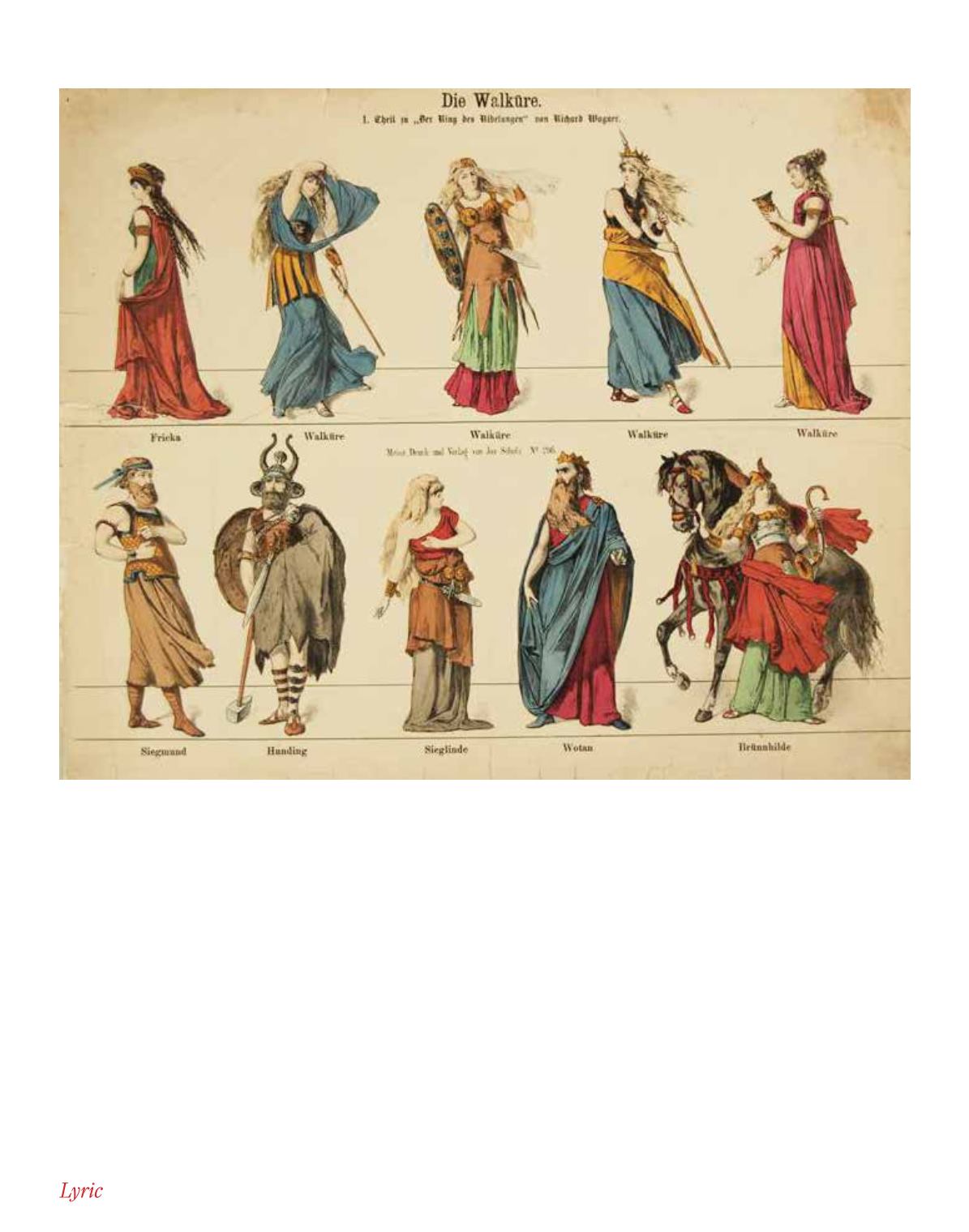

O P E R A N O T E S | L Y R I C O P E R A O F C H I C A G O
November 1 - 30, 2017
|
31
music and an interesting back story. It takes patience to mine
Walküre
’s treasures, musically and dramatically. Much of the opera
is foreboding and confrontational. The music, often in minor keys,
bespeaks strife, debate and anger. Yet audiences for nearly a century
and a half have been more than willing to wait for the opera’s grand
payoffs.
Why?
Because these are characters we care about, particularly
Siegmund, Sieglinde and Brünnhilde. Even Wotan, who came
across as a bossy wheeler-dealer for much of
Das Rheingold
, the
opening opera in the cycle, draws our sympathies by time the
curtain falls. David Pountney, who is directing the four
Ring
productions for Lyric Opera of Chicago, sees elements of Ibsen,
surely in advocacy of women’s rights and identity, spotlighted in
his play
A Doll’s House
.
Rheingold
, despite its fast-moving action and musical glories,
doesn’t register on the same personal level as
Walküre
. Drama and
power politics abound but other than Alberich’s grubby pursuit
of the Rhinemaidens and the giant Fasolt’s high school-like crush
on the goddess Freia,
Rheingold
provides little space for love or
humanity.
Walküre
more than fills the gap, starting with the romance
between the Volsung twins, Siegmund and Sieglinde in the opening
act. Act One is a gem of a mini-opera. It is the shortest act in the
Ring,
lasting a bit more than an hour, with only three characters—
all who are gone by early in Act Three. Symphony orchestras around
the world perform concert versions of Act One, and the 1935 Act
One recording with Lauritz Melchior as Siegmund, Lotte Lehmann
as Sieglinde, and Emmanuel List as Hunding, with Bruno Walter
conducting the Vienna Philharmonic, is considered one of the
greatest operatic performances ever put on disc.
Siegmund is the
Ring
’s man of constant sorrow and his
Volsung motif indicates a proud warrior who has had to fight for
everything. Once he meets Sieglinde, he senses that his life could
be about to change. Yes, there’s that little matter about the two
being brother and sister. Most audiences, however, are willing to
An audience of Wagner’s time would have seen costumes like these in
Die Walküre.
















